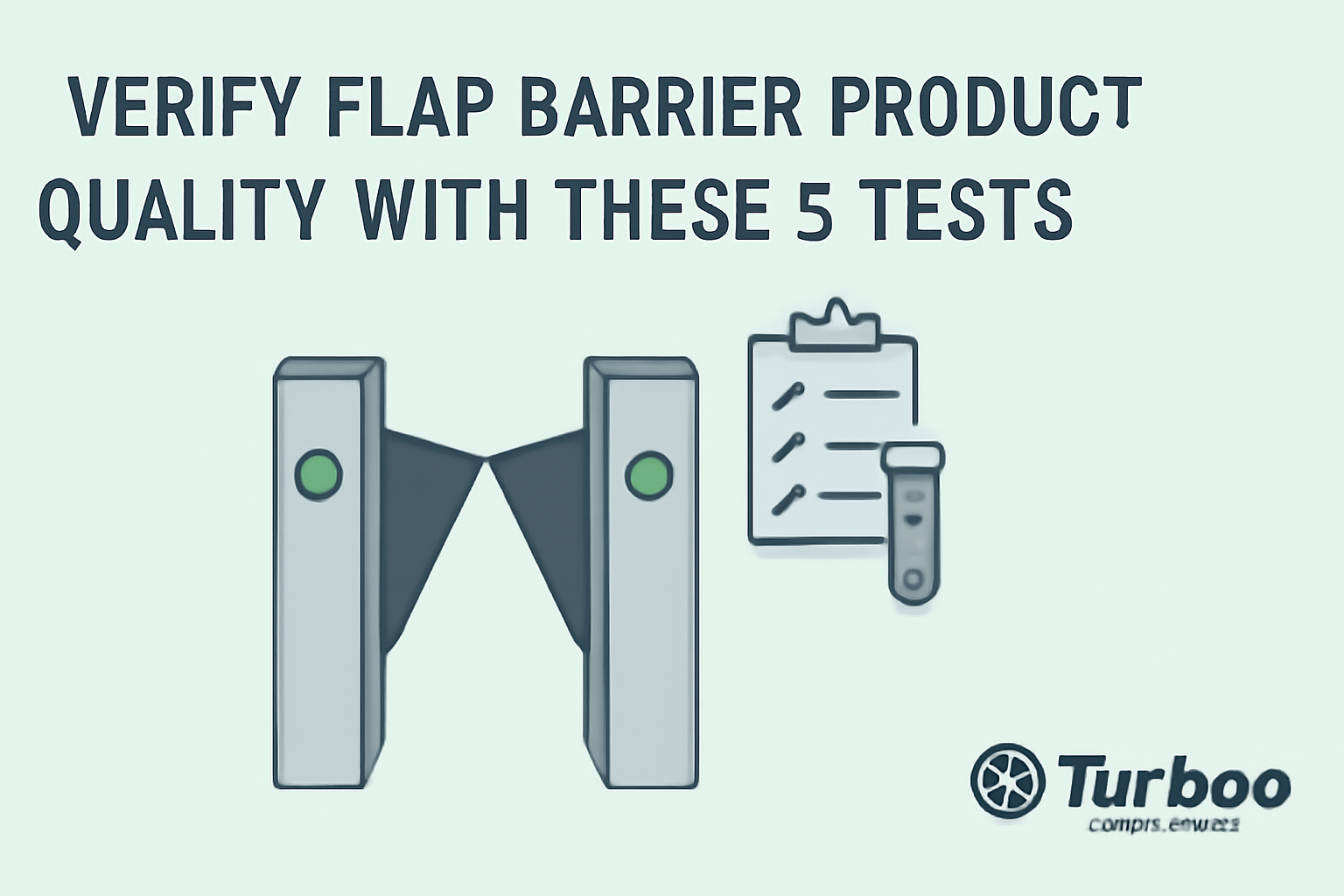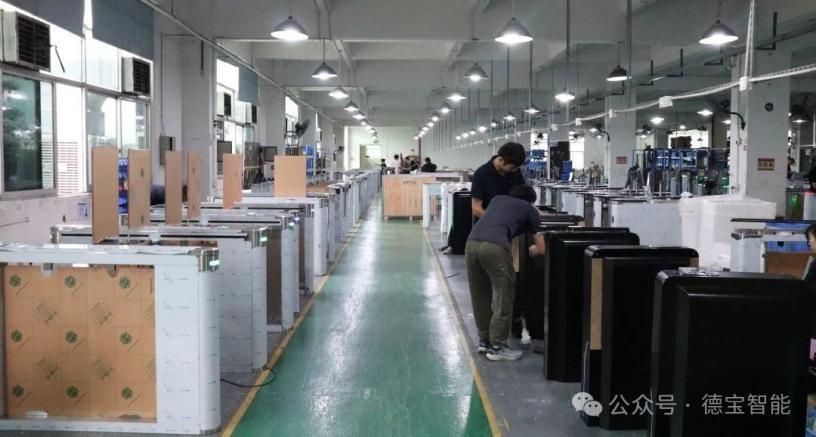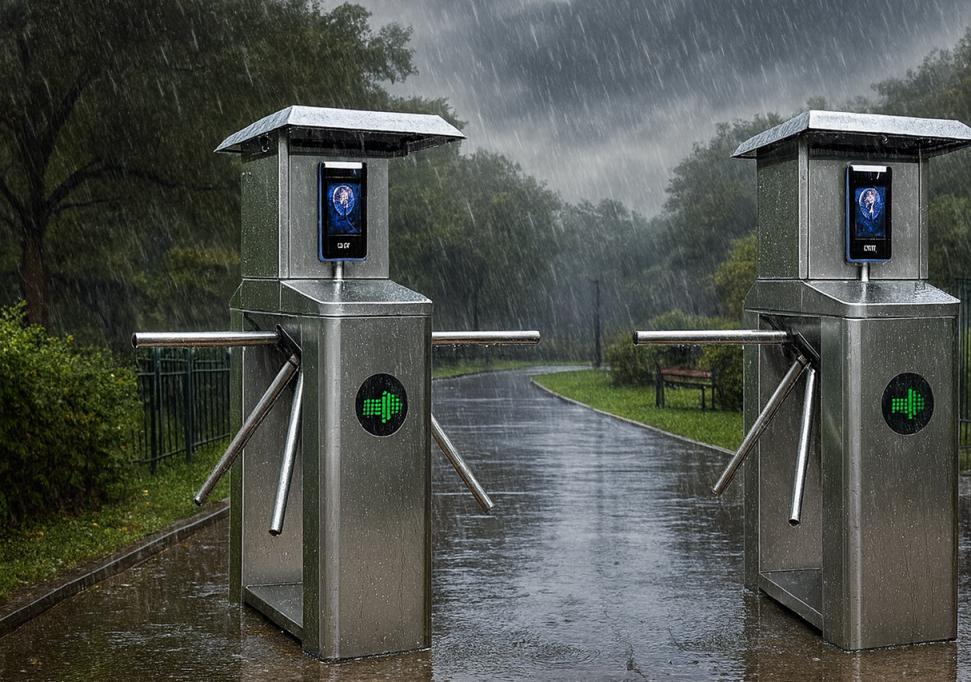Verify Flap Barrier Product Quality with These 5 Tests


Installing flap barriers in facilities comes with an expectation of smooth operation and minimal maintenance. However, many organizations face performance issues because the quality of the flap barriers was never fully verified. Without rigorous testing, you might experience operational hiccups, expensive repairs, or worse—user dissatisfaction. The challenge is clear: improper quality assurance leads to failures that could’ve been easily avoided.
So, how do you avoid these pitfalls? The answer is simple: structured tests that assess the reliability, safety, and durability of the flap barriers. Before approving a flap barrier for installation, performing these essential tests can save your facility from costly mistakes and ensure long-term performance. Imagine knowing that your barriers are tested and certified for reliability, leading to smoother access control, fewer repairs, and greater peace of mind.
In this guide, we will walk you through five critical tests you can use to verify flap barrier quality and ensure your systems are up to the task.
1. Mechanical Durability Testing: Ensuring Long-Term Functionality
Purpose of Mechanical Durability Testing
Mechanical durability testing is the process that checks how well the flap barrier’s structural components can handle prolonged use. After all, the entire purpose of a flap barrier is to provide secure and consistent access control, and it must stand up to repeated cycles of operation. A high-quality barrier should be able to withstand daily wear without losing its functionality.
What’s Tested
This test evaluates the durability of the flap barrier’s moving parts, such as the flaps, motors, and hinges. The material used for the barrier’s frame and cover is also assessed for strength. Additionally, the motor’s load-bearing capacity and the mechanism that allows the flaps to pivot are tested.
Why It Matters
Ensuring the barrier can endure continuous use without failure is essential for reducing downtime and maintenance costs. In facilities with high traffic, flap barriers are in constant motion. If the components fail due to weak materials or poor design, you could face expensive repairs or the need for a full replacement much earlier than expected.
Testing Process
Mechanical durability testing usually involves subjecting the flap barrier to a series of controlled tests, simulating continuous use. This might involve running the barrier through thousands of cycles (i.e., opening and closing) to measure how well the components hold up. The test simulates real-world conditions like the movement speed of the flaps and the impact on the barrier’s structural components.
Results and Interpretation
For this test to be considered successful, the flap barrier must show minimal wear and tear on moving parts. There should be no significant degradation in speed, performance, or noise level. If there’s any sign of structural fatigue, the barrier may not meet quality standards and should be reconsidered.
Practical Examples
One facility implemented mechanical durability testing and found that a barrier’s motors began to overheat after 10,000 cycles. The issue was resolved by switching to a motor with higher efficiency, which extended the barrier’s lifespan by years. This was an example of how crucial mechanical durability testing is in ensuring longevity and avoiding future breakdowns.
2. Sensor and Safety Testing: Verifying Safety Features
Purpose of Sensor and Safety Testing
Flap barriers play an integral role in maintaining security, but they also need to be safe for users. Sensor and safety testing ensures that the barrier’s sensors work effectively to detect objects or people in its path. These sensors should automatically stop or reverse the movement of the flaps if an obstruction is detected.
What’s Tested
This test checks the functionality of various sensors, such as motion detectors, pressure sensors, and infrared sensors. The main objective is to ensure that they react promptly and accurately to prevent injury or damage. Testing also evaluates safety features such as anti-pinch systems, which prevent the barrier from causing harm when closing.
Why It Matters
Proper sensor and safety testing is vital for ensuring that the flap barrier doesn’t pose a risk to users or malfunction in critical situations. Without effective sensors, there could be safety hazards, especially in high-traffic areas where people might get caught in the barrier or where unauthorized access could occur.
Testing Process
During testing, the flap barrier is subjected to various scenarios where an obstacle might appear in the flap’s path. The system’s reaction time is measured to ensure the sensors stop the flaps in time. It’s important to test these systems under different environmental conditions, such as low light or extreme temperatures, to ensure they work reliably.
Results and Interpretation
The results of this test should indicate that the sensors respond quickly, accurately, and consistently in all scenarios. If the sensors fail to detect obstacles or take too long to react, the flap barrier is unsafe and should be rejected. Properly working sensors are crucial for user safety, making this test non-negotiable.
Real-World Examples
In one case, a facility tested its flap barrier’s sensors and discovered that the infrared sensors failed to detect objects properly when the temperature dropped below freezing. After recalibrating and adjusting the sensors, the barrier became fully operational. This is a good example of how testing prevents safety incidents.
3. Cycle and Throughput Testing: Verifying Operational Efficiency
Purpose of Cycle and Throughput Testing
Cycle and throughput testing ensures that the flap barrier can handle high volumes of foot traffic efficiently. In facilities such as airports, stadiums, or office buildings, flap barriers need to handle thousands of cycles daily. This test measures the barrier’s ability to maintain performance under high traffic loads and during prolonged periods of use.
What’s Tested
This test evaluates how many cycles the flap barrier can complete without malfunction and its throughput capacity—the number of users that can pass through the barrier per unit of time. The test also looks at factors like speed and smoothness of operation to ensure the barrier doesn’t create bottlenecks in high-traffic areas.
Why It Matters
In high-traffic environments, barriers need to operate quickly and continuously. A flap barrier that is slow or experiences breakdowns under heavy use can lead to delays, frustrated users, and increased maintenance costs. Ensuring it can perform consistently is essential for maintaining facility flow and user satisfaction.
Testing Process
During testing, the barrier is run through thousands of cycles, simulating high-traffic conditions. The throughput rate is monitored to ensure it matches the facility’s needs. The barrier should be able to open and close swiftly without delays. The test also measures how well the barrier handles multiple users passing through simultaneously.
Results and Interpretation
Successful cycle and throughput testing means that the barrier can maintain high-speed operations and accommodate large volumes of users without slowing down. Barriers that show signs of slowing down or breaking down under pressure should be flagged for further investigation and improvement.
Practical Examples
In a busy airport, cycle and throughput testing showed that a flap barrier could allow 1,200 people to pass through every hour. Without this test, the barrier might have been assumed to be adequate, but this testing revealed it could handle even more passengers during peak travel times. This prevented bottlenecks at security checks.
4. Electrical Reliability Testing: Confirming Power System Integrity
Purpose of Electrical Reliability Testing
Electrical reliability testing is performed to ensure that the flap barrier’s electrical components are stable and resilient. Flap barriers depend heavily on electrical systems for their motors, sensors, and control mechanisms. A malfunction in any part of the electrical system could lead to complete failure.
What’s Tested
This test checks the power supply and electrical connections. The main components tested include the motor’s electrical connections, circuit boards, backup power systems, and the emergency stop mechanism. The testing also assesses whether the barrier operates smoothly during power fluctuations or failures.
Why It Matters
Electrical issues can lead to immediate or long-term failures, causing the barrier to stop functioning, which could disrupt operations. Furthermore, safety systems like emergency backups need to be fully operational in case of a power outage or failure. Without electrical reliability, a flap barrier is at risk of becoming unreliable and unsafe.
Testing Process
During the electrical reliability test, the barrier is subjected to power surges, drops, and other variations to check how well the electrical components handle them. The system is also tested for proper backup power operation, ensuring it continues to function during a power outage.
Results and Interpretation
The test should reveal that the flap barrier’s electrical components function consistently, even under power fluctuations. If any part of the electrical system fails during testing, it is a clear indication that the system isn’t reliable enough for use.
Real-World Examples
After electrical reliability testing, one facility found that their flap barrier’s power backup system failed to activate during a simulated outage. This discovery led to the replacement of the backup system, ensuring that the barrier would function properly even during unexpected power interruptions.
5. Integration and Compatibility Verification: Ensuring Seamless System Integration
Purpose of Integration and Compatibility Testing
Flap barriers must work seamlessly with a facility’s existing infrastructure, including access control systems, security protocols, and building management systems. This testing ensures that the barrier integrates smoothly with other technologies to provide a cohesive and efficient system.
What’s Tested
The integration test checks how well the flap barrier communicates and works with access control systems, alarms, cameras, and building management systems. Compatibility testing also checks whether the barrier’s software is compatible with the facility’s operating systems.
Why It Matters
A flap barrier that doesn’t integrate properly with the rest of the system can cause significant inefficiencies, such as security gaps or access delays. Smooth integration ensures that all systems work in harmony, improving the user experience and operational efficiency.
Testing Process
The testing process involves linking the flap barrier to the existing systems and running simulations to check for proper data exchange and operation. It also includes testing how the barrier responds to control commands, alarms, or emergency shutdowns from other systems.
Results and Interpretation
Successful integration and compatibility testing mean that the flap barrier works harmoniously with the rest of the facility’s systems. Any system or software malfunctions during this testing indicate that the barrier might not be the right choice for the facility.
Practical Examples
One facility experienced a delayed response from its flap barrier due to software compatibility issues with its new access control system. After identifying the issue during integration testing, the software was upgraded, and the system worked perfectly afterward.
Checklist: 5 Tests to Verify Flap Barrier Quality
- Mechanical Durability Testing: Ensures the flap barrier can endure continuous use without failure.
- Sensor and Safety Testing: Verifies that the sensors detect obstacles and ensure safety.
- Cycle and Throughput Testing: Confirms that the barrier can handle high traffic efficiently.
- Electrical Reliability Testing: Tests the electrical components for stability and power continuity.
- Integration and Compatibility Testing: Ensures smooth operation with existing systems and infrastructure.
Conclusion
Flap barrier product quality verification is crucial for ensuring that your facility operates smoothly, securely, and efficiently. Mechanical durability, sensor safety, cycle efficiency, electrical reliability, and system compatibility are all key tests that determine whether a flap barrier will perform as expected. By thoroughly evaluating each aspect, you can make informed decisions that save time, reduce costs, and prevent disruptions in operations. Ensure your facility’s success by conducting these five tests before approving any flap barrier for deployment.












